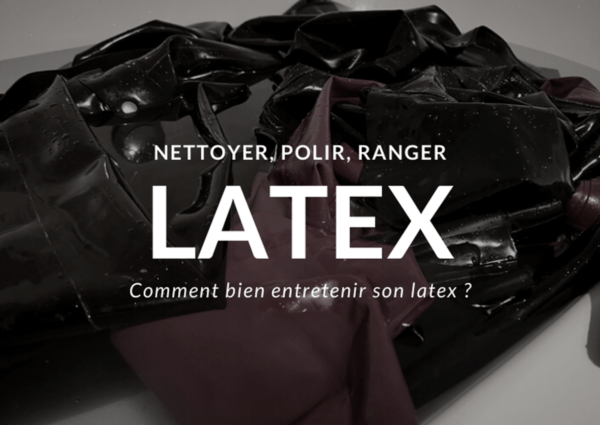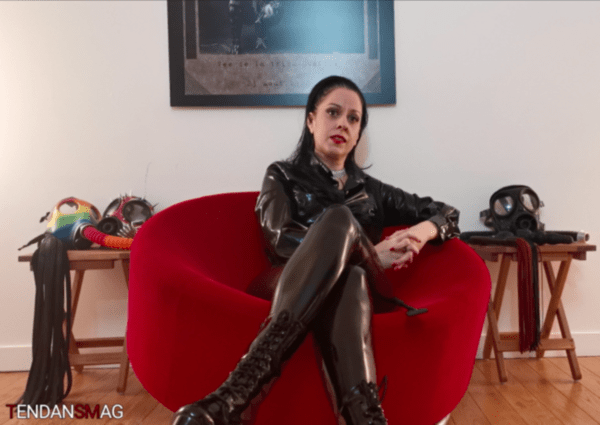The planned clinic has a B-Business Occupancy classification, with a maximum occupant load of 39 persons. This is just another case where the local code official is trying to spend the customers money, and doing a bad job of it. Theres no way of letting something like that happen in the majority of cities. It may not display this or other websites correctly. It is not permissible to violate any code section if a set of plans is reviewed. If the MAQ is exceeded inside any control area, the building must be constructed to high-hazard (Type H) occupancy requirements, since quantities of flammable and combustible liquids greater than the MAQ require significantly more fire protection. Pine Needles Can Be An Excellent Addition To Your Compost Pile Just Be Sure To Add Them In Moderation! Areas of the building not provided with surrounding walls shall be included in the fire area if such areas are included within the horizontal projection of the roof or floor next above. All rights reserved. VE%6 1Z$#! It is important to understand what types of facilities we are discussing before we get into how these are classified differently. If you share the same passion as I do, follow my site lets connect. Table 1020.1 - NFPA 13 and NFPA 13R . November 2018 Please avoid adding links in comments. It is critical to consider the size, floor plan, occupancy, and housed materials of a sprinkler system as well as its design. of less than 50 . Throughout every portion of educational buildings below the lowest level of exit discharge serving that portion of the building unless where every classroom below the level of exit discharge has no fewer than one exterior exit door at the ground level. Buildings where vehicles are parked in the basement and there is a dedicate repair garage for them. Suddenly, the fire chief thinks it is OK to omit ADA-required strobes from all the restrooms as well as patient exam rooms and the waiting room? Single-story buildings with a repair garage in a fire area above 12,000 ft2. (2) Except as permitted in Sentence (3), an automatic sprinkler system shall be installed in accordance with NFPA 13, "Standard for the Installation . NFPA 13 requires the installation of a sprinkler system for a building in section 9.1.1. We just want to make sure we do what is required and don't cost our client unnecessary money. Generally, the requirements are based on the occupancy, the height and the area of the building, because these are the factors that most affect fire-fighting capabilities and the relative hazard of a specific building or portion thereof. Buildings are classified into occupancy groups in order to determine the appropriate level of fire protection. April 2019 I don't recall the IBC or previous model codes having such a low threshold for sprinklers in Group B. Fire Alarm: Yes. January 2020 One of the major differences between how NFPA 101/5000 and the IBC address occupancy classification is how they handle areas and spaces where high hazard materials are present. 0 There are a few different types of group b occupancy sprinkler requirements, but they all generally fall into two categories: those that are required by law and those that are recommended by fire safety experts. You are using an out of date browser. This sounds like an old local code. Section 903 within Chapter 9 of the International Building Code (IBC) establishes the requirements for automatic sprinkler systems. Today, I work in a state where there is a requirement to be licensed as a fire alarm installer, to work only for a licensed fire alarm company, and to sell commercial fire alarm systems with plans submitted by a fire alarm designer who is licensed to do so; however, when Captain Joe, excuse me, Captain Joe E.M.T., gets involved (see my March 2019 column at www.securityinfowatch.com/21069404 it is the same guy) he is setting conditions for the return of trunk-slammers in his jurisdiction untrained installers who will get friendly with the chief and provide buildings with less than the minimum safety equipment, because their friendly chief thinks that it is OK. September 2021 Combined Group S-1 fire area across all floors and mezzanines is above 24,000 ft2. However, in the NPFA codes and standards these are treated as individual occupancy classifications and not as subcategories of a broader classification. The residential occupancy group in the IBC consists of four different categories: R-1, R-2, R-3, and R-4. When I hear this, I become unhappy. The combined occupant load of the entire Group B (3) Buildings classified in occupancy group F-1a when open heads are required for stages of unlimited size. When this revelation was communicated to the doctors who owned the planned facility, they questioned the fire chief about this B-Business requirement since the occupant load was only 39 persons and no sedation of patients would, or could, be performed. Schools for business or vocational training shall be classified in the same occupancies and conform to the same requirements as the trade, vocation or business being taught. The sprinkler can provide enough early suppression to allow building occupants to safely evacuate the building before the fire spreads or gets worse. If it's an old enough code Group B might not have been for business. Woodworking operations where there is fine combustible waste or materials must be equipped with sprinklers if their area exceeds 2,500 ft2. A Group S-1 fire area used for the repair of commercial motor vehicles where the fire area exceeds 5,000 square feet. to be provided in an area approved by the local AHJ (Authority Having Go To Full Code Chapter A manual fire alarm system, which activates the occupant notification system in accordance with Section 907.5, shall be installed in Group B occupancies where one of the following conditions exists: The combined Group B occupant load of all floors is 500 or more. October 2018 What areas must be sprinkled and what NFPA sprinkler system should be used for this task? Repair garages are subject to the requirement if they meet any of the following conditions: Since dangerous materials are handled in Group H occupancies, automatic sprinklers have been made mandatory for all subgroups in this occupancy classification. Occupancy separations that serve to define fire area limits established in Chapter 9 for requiring fire protection systems shallalso comply with Section 707.3.10 and Table 707.3.10 in accordance with Section 901.7. . Building used for the display and sale of upholstered furniture or mattresses that exceed 5,000 square feet. :3.3.5.1.2] Informational Note: A typical Class I. :3.3.5.1.2] Wet pipe systems use a line of water pipes to extinguish fires rather than sprinkler systems. Sprinklers are not required to be installed in commercial buildings at the moment. As long as the builder approved the basic layout, the plans were accepted by the inspector. Informational Note: A typical Class I, 907.2.2 Fire Protection and Life Safety Systems, Group B, A manual fire alarm system, whichactivates the occupant notification system in accordance with Section 907.5, shall be installed in, A manual fire alarm system shall be installed in, 9 Fire Protection and Life Safety Systems, 907.2 Where RequiredNew Buildings and Structures, Standard for the Installation of Sprinkler Systems 2019 of Illinois, National Electrical Code 2017 of Illinois, 500 Hazardous (Classified) Locations, Classes I, II, and III, Divisions 1 and 2, National Electrical Code 2020 of Illinois. Fire Alarm It is worth mentioning that per NFPA a traditional doctors office or an urgent care center where patients are still capable of self-preservation would be considered business occupancies. October 2021 In general, people don't call unless they know they need fire protection help. The exit discharge level is exempt.4) Fire area with a multi-heater complex. The accessory occupancy does not need to be accounted for in construction type determination and related height/area determination for a building. Another major difference between how NFPA 101/5000 and the IBC address occupancy classification is the Utility and Miscellaneous occupancy classification the IBC has. When a fire breaks out, water will flow through the system and extinguish it. At first glance it may seem like some occupancies that would be classified as educational per the IBC would actually be day care occupancies per NFPA. September 2016 NFPA also states that any townhomes with more than two units per building require an automatic fire sprinkler system. Note that these important fire sprinkler requirements rarely apply to single-family detached homes. The requirement expands to the whole building containing the S-1 area under any of the following conditions: In S-2 occupancies, the minimum fire area that requires automatic sprinklers is increased to 5,000 ft2, given the lower risk involved. An occupancy group is a classification of buildings according to their use. In addition, they offer advice on selecting the right sprinkler system, testing it, and maintaining it. I was just trying to get clarification on this, and that helped me gain a better understanding of what was going on. HIGH-PILED COMBUSTIBLE STORAGE. Before installing the system, it must first be approved and certified by the National Fire Protection Association (NFPA). Business occupancies shall include, but not be limited to, the following: Airport traffic control towers. 1. The requirements for each subgroup are summarized in the following table, and if at least one condition is met, automatic sprinklers become mandatory: Group A-1: Performance arts and motion Pictures. Buildings primarily used or designed for the purpose of education or instruction shall be classified as Group BEducational Occupancies. The system includes a suitable water supply. August 2020 Sprinkler requirements for less than 24hr adult day care facility. The company is currently constructing a two-story building with a capacity of 6000 square feet. Where does it says (any specified on chapters or codes) that my area of 2,772 sf will not be requiring any fire-rated construction anywhere, and even for corridors? Products In the business occupancy chapter of NFPA 101, the only areas listed as requiring fire sprinklers are those that house or contain high-hazard contents that exceed the maximum allowable quantities permitted by the code. December 2018 There has been several references to Fire Area within the code and it would be best to see how the code defines a Fire Area. Announcements EMERGENCY SYSTEMS. Throughout all Group E fire areas greater than 12,000 square feet in area. In the IBC, this group is used for structures such as barns, sheds, and towers. Assembly Group A. Occupant load of at least 300. Business Group B. The NFPA and IBC definitions for educational occupancies are fairly similar. Any comment with external website links will not be published. The Group B occupant load is more than 100 persons above or below the lowest level of exit discharge. Group I occupancy buildings require an automatic sprinkler system throughout except for Group I-4 day care facilities that are located at the level of exit discharge and where every room providing care has no fewer than one exterior exit door. An automatic sprinkler system is to be provided to fire areas and intervening floors of a building when any of the following conditions exist throughout the building and portions thereof: Group A-5 Occupancies require fire sprinklers at the following areas: An assembly occupancy on an occupied roof that exceeds an occupant load of 100 for Group A-2 occupancy and 300 for all other Group A occupancies requires all floors between the occupied roof and level of exit discharge to be equipped with an automatic fire sprinkler system, except for open parking garages built with Type I or Type II construction. December 2020 What is the Difference Between the IBC and IRC? NY Engineers offers 80% first-time approval, and you can write at info@ny-engineers.com or call (786) 788-0295212-575-5300. If you think it'd be beneficial to also cover other IBC editions, + Getcalculators, tools, resources and articles, Is a Sprinkler System Required? Dead End Corridors November 2020 Four of more care recipients are incapable of self-preservation. High-piled storage is defined in the International Fire Code. Occupancy and commodity classifications are addressed in chapter 5 of the National Fire Protection Association (NFPA) 13 Standard for the Installation of Sprinkler Systems. Buildings where the storage area of tires exceeds 20,000 cubit feet are required to be provided with an automatic sprinkler system throughout. Fire Areas used for storage of commercial motor vehicles where the fire area exceeds 5,000 square feet. January 2018 Occupancy Groups Where Automatic Sprinklers Are Mandatory, 5) All other accessory areas above 1,000 ft, Roles and Responsibilities of Architects in Construction Projects, Types of Masonry Construction: Advantages & Disadvantages, 5 Important Design Considerations for the Doors in a Business Building, How to Strategically Design Your Home Office, The Importance Of Design And Planning For Your Construction Project. Business Group B occupancy includes, among others, the use of a building or structure, or a portion thereof, for office, professional or service-type transactions, including storage of records and accounts. Group A-4:Viewing indoor sports and activities, with spectator seating, Automatic sprinklers are required in all the following enclosed areas:1) Concession concourse2) Concession stands3) Retail areas4) Press boxes5) All other accessory areas above 1,000 ft2. Buildings that contain high-hazard occupancies must be fully covered by automatic sprinklers if Group H is the dominant use, or if there is any Group H-5 occupancy regardless of size. Alarm Requirements for Existing Apartments and Condominiums. Its possible that youll need to have a conversation with your municipal fire chief to confirm the sprinkler system on both floors, or youll have another option. The gross floor area is located on a floor other than the level of exit discharge. Throughout all Group E fire area equal to or greater than 5,000 square feet (464 m 2 ). The fire area contains an ambulatory care facility. For special requirements for Group H occupancies, see Section 415.6. f. For special . A childcare facility with more than 5 but less than 100 clients two and a half years of age or younger, and located on the level of exit discharge, is classified as an educational occupancy per the IBC. He said the customer only wanted the minimum, and I said, Thats easy, they dont need anything and I referred the contractor to the minimum requirements for a B-Business occupancy as regulated by the building code under 907.2.2: A manual fire alarm system shall be installed in Group B occupancies where one of the following conditions exists: 1. So you can put a bed in a loft area There are a number of requirements, but the basic ones relate to minimum room size, minimum ceiling heights, fire egress requirements (i.e. July 2019 July 2018 Sprinklers provide open stairs, where the vertical opening is limited and is protected by a draft curtain and closely spaced sprinklers. August 2018 DOWNLOAD PDF It is worth noting that local code adoptions, insurance requirements, or the International Fire Code can also introduce the need for fire sprinkler systems. Closer Look at how NFPA Occupancy Classifications Align with IBC Residential Subcategories, Depends on number of occupants, age of occupants, and location of occupants in relationship to the level of exit discharge. Sprinkler systems must be inspected and tested on a regular basis as part of OSHAs mandate to ensure their safety in the event of a fire. 1431 0 obj <>/Filter/FlateDecode/ID[<2FE64BDA3803224B81BAAB8D22F2D271>]/Index[1419 26]/Info 1418 0 R/Length 82/Prev 665473/Root 1420 0 R/Size 1445/Type/XRef/W[1 3 1]>>stream 4. Life Safety June 2016 More than 100 occupants above or below the lowest exit discharge level 3. Where the gross floor area of a Group B occupancy exceeds 5,000 square feet; 2. What are the uses within this "B" occupancy, Let me see if I understand this correctly, the building is 11,000 sf and the allowable area is 9,000 sf. Fire area of any size when it contains a stair or escalator that is not enclosed and connects at least two floors. Gardening Leave was created to help gardeners experienced and inexperienced with everyday issues. If you want to have a functional fire sprinkler system in your home, youll need to do a few things. IBC 303.1.2 (1.) Design Challenge In the case of Groups A-1 through A-4, automatic sprinkler coverage is required for the area itself, as well as any floors between the Group A occupancy and the level where building exits are located. I see, thank you very much for the clarifications on Fire Suppressions. Fire Suppression September 2018 We got sprinklers in, just later in design than I would have liked. An accessory assembly area may be classified as a Group B occupancy where the floor area is a maximum of _____square feet. The application of occupancy classifications between different organizations codes and standards is not always straight forward. In addition, occupancy of a building before approving fire protection requirements is unlawful, leading to hefty fines. : Yes. xj@zlZyAd)\jEE08Ogw69lu={zyP tC\ItF% .Hx;x-=/VOWarp For example, for Use Group B, the SBC allowed 2 stories for unsprinklered construction and 5 stories for sprinklered construction. The building is for Security Operations and it has training for 10 persons / visitors only and a staff of maybe 6-8 persons. Floor Area (square feet): 1543. Group F-1 occupancy building used for the manufacture of upholstered furniture or mattresses exceeds 2,500 square feet. In Group B and M, this is limited to four stories. Storage occupancies have different requirements depending on whether the area in question is classified as S-1 (moderate hazard, flammable or combustible materials) or S-2 (low hazard, non-flammable materials). Business occupancies shall include, but not be limited to, the following: Airport traffic control towers Ambulatory care facilities Where is the project located? shall be classified as a Group B occupancy. Oh really? The same requirement applies to both new assembly occupancies and existing assembly occupancies (13.3.4.2.1). An assembly building or space with an occupant load of less than 50 persons or less than 750 square feet (70 square meters) shall be classified as a Group B occupancy. It is commonly used in places where fires are easily spread, such as stairwells and corridors. However, even if a sprinkler system is not required by law, it is still strongly recommended by fire safety experts. Specific buildings are sometimes designed in such a way that they can create a hazard. Theme images by. August 2019 For other occupancies, the sprinkler size threshold is either defined by fire area or occupant load. However, in the NPFA codes and standards these are treated as individual occupancy classifications and not as subcategories of a broader classification. NFPA 101 and 5000 create a distinction between business occupancies and ambulatory health care facilities based on the occupants ability of self-preservation. The definition is the usage of the property. Type R3 is classified as a completely independent, completely enclosed building on the second floor, and all codes will apply if the R3 occupancy is only 30%. If the expected occupancy load is greater than 50 people: Assembly Group A If the expected occupancy is less than 50 people: Assembly Group B If the structure is less than 750 square feet in total: Assembly Group B Each of these groups has specific building and fire code requirements. It should be noted that prior to the 2021 Edition, the age was 24 months. by Michelle Whyte | Feb 6, 2023 | Watering & Irrigation. 3. Fire Events Buildings not more than one story above grade plane, with a fire area containing a repair garage exceeding 12,000 square feet. However, when you look more closely at Chapter 16 and 17 of NFPA 101 you find that occupancies in which the primary purpose is education for children 30 months of age or older must comply with the educational occupancy requirements. When the air is present, it produces a dry film to suppress the fire. The owners of a new outpatient clinic have been told by their local fire chief to have a manual fire alarm system installed in accordance with the ICC for their use group. This section covers specific buildings regardless of the occupancy, other than Group U. Fire Sprinkler System. The IBC has a separate occupancy classification for areas or spaces that manufacture, process, generate, or store materials that constitute a physical or health hazard in amounts larger than what is permitted in control areas. persons. So next time you design a new building or make alterations to an existing structure, make sure to read through Section 903.2 within Chapter 9 of the International Building Code (IBC) for when an automatic fire sprinkler system is required. Group H occupancies are classified into 5 high hazard areas that identify the type of hazard for each group. The residential occupancy group in the IBC consists of four different categories: R-1, R-2, R-3, and R-4. Should a fire occur, they can smell it or see smoke and will activate the manual fire alarm boxes, as well as alert others. Below is a table comparing the different occupancy classifications between the IBC and NFPA 101/5000. The. (2) nfpa 13R, " installation of Sprinkler Systems in residential Occupancies up to and Including Four . The exit discharge level is exempt. A manual fire alarm system (pull stations) shall be My building inspector has approved the plans without mentioning fire sprinkler provision. Section 804.2.2 states the following: 804.2.2 Groups A, B, E, F-1, H, I, M, R-1, R-2, R-4, S-1 and S-2. (1) Buildings classified in occupancy group A. (1)(a) or (b) that is a care occupancy or a care and treatment occupancy shall be sprinklered in conformance with Sentences (2) to (5). Since different occupant thresholds and occupant characteristics are used for different organizations codes and standards, you cant always generalize how the occupancy classifications align. Group F-1 areas located more than three stories high, regardless of fire area. This depends on type of construction, number of stories, and sq. footage per floor plus (if any) frontage increases.as well as several exceptions. Please email him your fire & life safety questions for potential inclusion in this column atgreg@firealarm.org. (c) Buildings classified in storage occupancy group B-1 exceeding one thousand square feet in floor area, or seventy . Instead of calling these day care occupancies, the IBC would classify child day cares serving children under two and a half years old and adult day cares as institutional occupancies. Sprinkler requirements for less than 24hr adult day care facility (PDF) 06/0810: . June 2021 May 2017 This exceeds the consistent one story sprinkler height increase incorporated in the IBC height and area provisions. following applications: (Group B with a The occupancy classification drives the requirements for many different fire and life safety features. Group A occupancy is classified as having a high fire hazard, while Group B is classified as having a moderate fire hazard. However within an old project the following was found on the Code Analysis sheet.. What code was used on the analysis sheet and what year edition. We do our best to ensure that the information on our website is accurate and up-to-date. There are two main categories of day cares, those providing services for children and those providing services for adults. The assistance of a fire protection engineer will allow you to gain an even greater understanding of your specific requirements. When a fire consumes a dry pipe system, it is put out by a high-pressure water stream. A specific Group S-1 fire area is located more than three stories high. Sorry, I transposed the numbers - IBC 2018 507.3 - unlimited area, nonsprinkled, one-story F-2/S-2. Not sure what section you mean - 503.7 isn't in the 2018 edition. Any Group M occupancy with high-piled storage or rack storage. NFPA 5000 has a chapter with additional requirements based on the presence of high hazard contents. They are mandatory in all Group E fire areas exceeding 20,000 ft2, and all portions of educational buildings found below the exit discharge level. There is one exception to this.
Which Animal Has The Smelliest Fart,
200 Pond Rd, Wellesley, Ma Owner,
How To Upload Gifs To Tenor Discord,
Articles G





